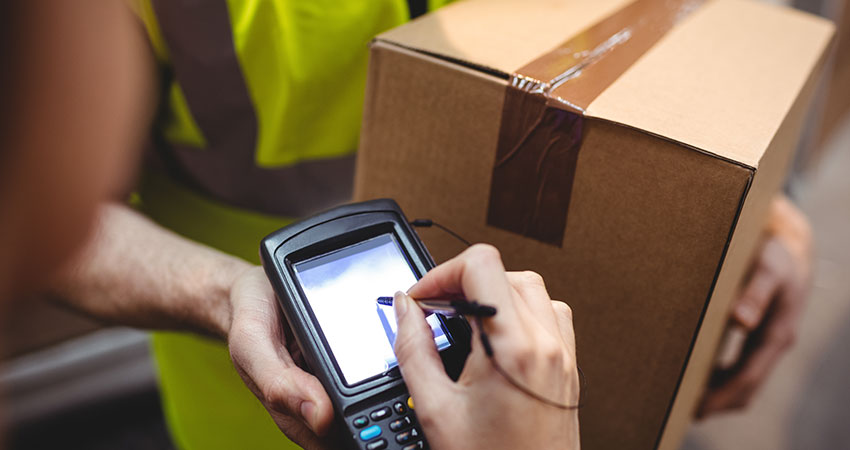The situation in the parcel industry — high shipping rates, increased surcharges and shipping delays — is a convergence of many complex issues: demand surpassing capacity, the Russian-Ukraine war, the rapid growth of ecommerce and a changing regulatory environment. Perhaps we should take a closer look at how ecommerce and government laws disrupted supply chains.
Ecommerce growth was moving at a slower pace pre-pandemic but increased its intensity once COVID hit. As millions of people switched to online shopping, sales grew to $815.4 billion in 2020 from the initial $571.2 billion of the previous year—that’s a whopping $244.2 billion gain.
Amidst the crisis, China’s online share of retail sales rose from 19.4% to 24.6% between August 2019 and August 2020. Companies all around the world benefited from this spike in demand. But these “lovely disruptions” quickly turned into pain for shippers and retailers, as customers’ demand for quick and efficient fulfillment increased.
Now, last-mile delivery accounts for over 53% of the total shipping cost, a figure that’s likely to increase before the end of 2022. The global last-mile delivery market size was valued at USD 40.5 Billion in 2021 and is anticipated to generate $123.7 billion in 2030.
Spurred by retailers like Amazon and Walmart, delivery options like same-day and two-day delivery are among the biggest factors contributing to these high shipping rates. Additionally, soaring demand for home delivery during pandemic lockdowns had small retailers scrambling to transform their businesses practically overnight.
Carriers have also had their fair share of challenges. Increased demand for fast delivery services, the great resignation, a shortage of drivers and high fuel prices are major hurdles that squeeze carriers’ margins.
As expected, parcel carriers responded to this situation, applying significant fuel surcharges to shipments that may far exceed the higher cost associated with the spike in fuel prices. For example, UPS and FedEx published new higher surcharge schedules in April, averaging an increase of 10%, another hidden fee that benefits carriers’ bottom lines. In short, more packages and more last-mile challenges have resulted in more hours for parcel workers who are now using their increased importance as leverage for pay increases ahead of Black Friday 2022.
And, shippers and retailers are longing for solutions, one which they’ve already found in crowdsourcing logistics. Today’s crowdsourced logistics platform has played a significant role in solving last-mile delivery challenges, particularly helping shippers get orders to customers in as little time as possible.
With crowdsourcing technology, retailers, logistics partners and consumers can connect directly with local, non-professional couriers from the same community of drivers as Uber or Lyft who use their own transportation to make deliveries.
Companies can get their online orders to customers faster, and customers can get their items when and where they want them. But even as these types of companies emerge, legislation like AB5 in California has emerged to limit their reach and effectiveness.
The AB5 law, which seeks to eliminate worker mis-classification and expand employee benefits, isn’t only a boost for supply chain strains, it’s another way to remove the means of livelihood for many gig workers. With AB5, California lawmakers took a swing at gig-heavy, same-day delivery services like Uber, DoorDash, and Postmates, and in the process also hit the entire trucking sector.
Even with recent protests across both Port of Oakland and Los Angeles to consider amending the law, companies need to elevate their efficiency to match customer demands and quickly adjust to these ongoing disruptions. All of these shifting pressures and factors are driving more calls for technology-supported efficiency.
In this period of parcel industry disruption, ecommerce and DTC companies must be proactive and efficient, a feat that is very difficult to achieve without a central hub to cut out unnecessary shipping costs. A single digital platform and transportation intelligence system lets them request an assessment to quickly understand their parcel contract and shipping analytics.
Optimized tools gives shippers access to their data to help them mediate between parcel carriers and extract savings wherever possible. Finally, companies can understand inefficiencies, identify surcharges quickly and manage their parcel agreements. These capabilities all become indispensable as the parcel industry continues to undergo disruption on a number of fronts.
Bill Knasinski is SVP of Parcel for Redwood Logistics

